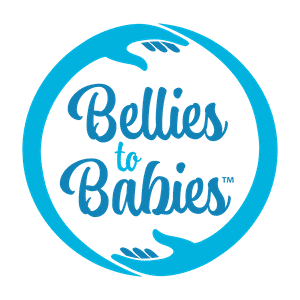Protecting Yourself and Baby: What You Need to Know About Listeria Infection During Pregnancy
Listeria infection is an illness that can be contracted by eating food contaminated with bacteria known as Listeria monocytogenes. Listeria infection is one of the most serious types of food poisoning. Pregnant women are 10–20 times more likely to get it than the general population. Even a mild infection in a pregnant woman can cause miscarriage, stillbirth, premature birth or a baby who is very ill when born. Let's find out how you can avoid it.
Pregnant women and their unborn babies, newborn babies, the elderly and anyone whose immune system has been weakened by disease, illness or on medication that can weaken their immune system are more at risk.
Listeria bacteria can be found in soil, dust, water, plants, sewage and animal droppings. Due to contamination, they have also been found in a variety of foods, including raw meat, raw vegetables and some processed foods and commonly transmitted to humans by eating contaminated food. Outbreaks of Listeria infection have been reported from eating contaminated soft cheeses, milk, coleslaw, hot dogs, paté and processed foods. As Listeria bacteria are commonly found in the environment, they are impossible to eradicate. Some exposure to the bacteria is unavoidable. Most people are, however, at low risk of Listeria infection.
The bug has been found in a variety of foods at all stages of preparation, from raw to well-cooked leftovers. Listeria can also grow on food stored in a fridge, hygiene and food preparation is critical in reducing the risks.
The symptoms may be general, such as fever, headache, tiredness, aches and pains, which may be accompanied by diarrhoea, feeling sick (nausea) and stomach cramps. On average, symptoms appear after about 3 weeks but may appear as late as 2 months after you have eaten something with listeria. But even a mild form of the illness can affect your unborn baby and may lead to miscarriage, stillbirth, premature birth or a very ill baby at birth.
Listeriosis is fairly uncommon (phew!) The best way to avoid listeria infection is to avoid high-risk foods and always handle food safely
If you think you have eaten food contaminated with listeria or if you have any of the symptoms of listeria infection, contact your doctor or midwife (LMC) right away. Remember that it can take 2 months for symptoms to appear. Your doctor or LMC may ask for a blood test to see whether you have a listeria infection. You may need to take antibiotics to treat the infection and prevent your baby from becoming infected.
While food safety procedures aim to prevent listeria from getting into the foods we eat, there are some foods that are more likely to be contaminated and while you are pregnant, you should not eat them. Avoid all raw and under-cooked seafood, eggs, meat, and poultry while you are pregnant. Do not eat sushi made with raw fish (cooked sushi is safe). Cooking and pasteurisation are the only ways to kill listeria.
Other high-risk foods include the following:
Ready-to-eat seafood (smoked ready-to-eat fish, smoked mussels, oysters, prawns).
Pre-made salads (coleslaw and fruit salads etc).
Pre-cooked meat products which do not require further cooking or heating ( paté, deli meat, salami and cold pre-cooked chicken etc)
Unpasteurised milk or foods made from unpasteurised milk such as - soft-serve ice-cream, soft, semi-soft or surface-ripened soft cheese ( brie, camembert, feta, ricotta, Roquefort etc).
Hummus and tahini-based spreads
Note that these foods are safe to eat if heated thoroughly to steaming hot (ie, above 72°C).
Foods that are safe to eat.
All fresh foods that have been thoroughly cooked (until piping hot) and eaten straight away.
Milk – freshly pasteurised and UHT (longlife) and milk products such as yoghurt, hard cheeses.
All canned and pickled food,
Vegetables and fruit that have been well washed.
Breads and cereals (without added mock creams or custards).
Dried food (fruit, nuts, lentils, beans etc).
Safe food handling and safe storage of food is important:
Wash your hands before preparing food and between handling raw food and ready-to-eat foods.
Wash raw fruit and vegetables well before eating.
Cook all foods of animal origin, including eggs, thoroughly.
Cook leftover foods or ready-to-eat foods until steaming hot before eating. and place any leftovers in your fridge within one hour of cooking.
Keep uncooked meats separate and well covered in your fridge and away from vegetables, cooked foods and ready-to-eat foods.
Wash hands, knives and cutting boards thoroughly with hot water and soap after handling uncooked foods.
Take special care when using a microwave to heat food all the way through until it is piping hot.
Do not handle cooked foods with the same implements (tongs, knives, cutting boards) used on raw foods, unless they have been thoroughly washed with hot soapy water between uses.
Keep hot foods hot (above 60°C) and cold foods cold (at or below 5°C). Reheat food until the internal temperature of the food reaches at least 70°C. You can purchase cooking thermometers from local food equipment stores. If using your microwave, read the manufacturer's instructions carefully and observe the recommended standing times, to ensure the food attains an even temperature before it is eaten. Unlike most other food-contaminating bacteria, Listeria can grow in the refrigerator. However, Listeria bacteria are readily killed during cooking.
To learn more; The NZ Government Ministry of Primary Industries (MPI) in Food Safety (previously called the NZFSA) has a booklet Food safety in pregnancy and other useful resources available to download from the Food safety website.
You can also talk to your doctor or LMC and contact the Public Health Unit at your local Community Health Service.
Medical disclaimer: This page is for educational and informational purposes only and may not be construed as medical advice. The information is not intended to replace medical advice offered by physicians, osteopath, midwife, obstetrician, chiropractor or other qualified health care provider.

